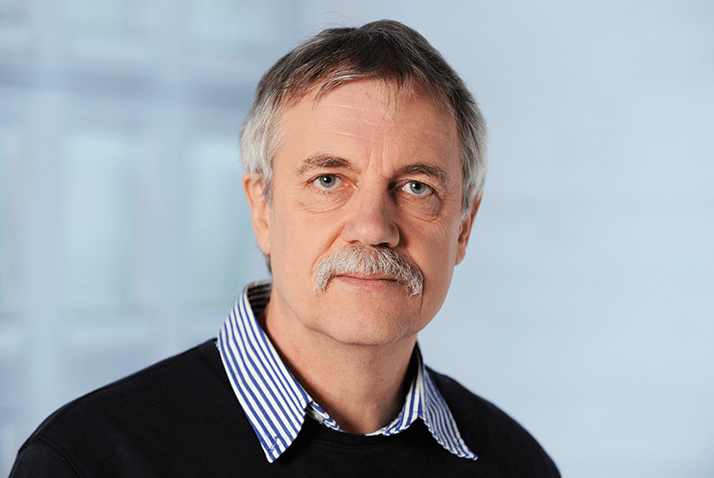
I’ll likely cover the new ability of proteomics to quantify proteins highly reproducibly across many samples, allowing a much better understanding of how biochemical systems function. One of the big, high priority questions is how genomic variability translates into different phenotypes, traits, and diseases. We can now measure genomic variability for whole populations with very high precision – we need to map that to function and abundances of proteins and enzymes in the cell.
I read a book when I was younger that really opened my eyes to science. It explained everything from background microwave radiation to protein folding. The author had an amazing ability to put things in perspective. I ended up doing a PhD in the dark ages of immunology – it was an unpredictable field back then and the big questions didn’t seem tractable. I started to shift focus to analyzing proteins using Edman degradation.
That’s true! The light chain (200 amino acids) of an antibody took about half a year to sequence – a lot of manual (pretty boring) work. But it meant that we could relate biophysical measurements of monoclonal antibodies to affinity, sequence and specificity; the effort was worth it. But at around the same time, gene sequencing was really starting to take off. Suddenly, what took me half a year to sequence at the protein level took only days or weeks to do at the nucleic acid level. I remember suggesting to my supervisor that we switch to modern nucleic acid techniques. “No,” he said, “we are a protein chemistry laboratory.” I continued to work with proteins, which in retrospect was great because I got to optimize skills that were essential later.
I realized that we were very limited in terms of techniques. I decided to join the most innovative laboratory of its the time in that areas – the lab of Lee Wood at Caltech – to help advance protein sequencing technology. I figured out how to take a band that was detected in the SDS gel and directly obtain amino acid sequence of the protein in the band, connecting protein sequencing methodology to the most commonly used tool for protein separation at the time.
Right. In the late 1980s, two breakthrough methods came along: electrospray ionization and MALDI. All of a sudden, we could measure proteins and peptides by mass spectrometry very routinely. Questions quickly shifted to how you get proteins that usually occur in cells or tissue in a complex mixture into the mass spectrometer in a form that the protein can be measured. These were exactly the techniques I had worked on as a post doc; we knew exactly how to separate small amounts of proteins, enzymatically digest them, and separate the resulting peptides. Our head-start allowed us to make fairly fast inroads into the burgeoning field of proteomics.
The field was advancing pretty fast, with various pioneering contributions from great colleagues along the way – online LC-MS from Don Hunt’s lab and SEQUEST from John Yates, for example. But the field needed to move beyond simply creating an inventory of proteins; we wanted to be able to quantitatively compare protein abundance in multiple samples. We knew we had a good solution. Initially, we introduced isotope coded affinity tag (ICAT) methods and then later came SILAC from Matthias Mann’s group and a whole range of other labeling techniques.
You have to be driven by biological questions. We never approach a problem solely with an analytical goal, such as 10 times more sensitive detection of a peptide or the identification of a higher number of proteins from a specific sample. In many cases, the most important parameter is not how many proteins we see or quantify (though it would be great to cover everything!) but rather precision and reproducibility in the measurements we do make. We are focused on very high consistency across dozens or hundreds of samples – that’s how SWATH came about. Initially, we could only precisely quantify 50-100 proteins with high consistency, via selected reaction monitoring; now, we can do several thousand and the data are becoming extremely informative. Of course, we want to dig deeper into the proteome – but while maintaining critical consistency.
What I say to students and post docs: make connections earlier to scientific colleagues and peers. Go to conferences – make yourself known in the field; ultimately it is the network you operate in that is important, not just what you do. If you can build a network – inside and outside your field – you will achieve far more than being in isolation and trying to change the world alone. In short: network, open up and discuss things! Some people seem worried that if they talk too early about a project or idea, someone will beat them to fame and glory. In my experience, it’s extremely rare that someone has taken something, run with it, and scooped us. Usually, people provide feedback – there is enormous knowledge around. The chances of you being scooped by talking about your ideas is miniscule compared to the potential benefits you receive from feedback. I plea for people to share their ideas and openly discuss them. Then we can move forward together.




